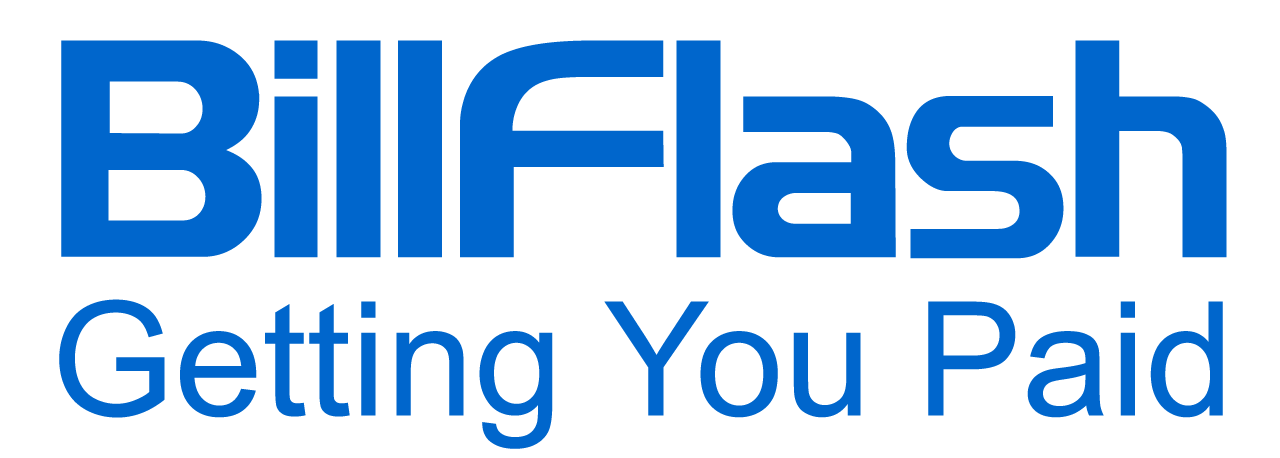The path to a proper reimbursement process involves several challenges. Here, we explore common reimbursement issues and how to solve them.
In most businesses, payments happen quickly—prices get quoted, money trades hands, and customers get what they paid for. But in healthcare, it's far more complicated. Healthcare providers and their practices often provide treatment first, then face complex reimbursement issues that can be riddled with denials, delays, and other obstacles. Getting properly reimbursed on time is a constant challenge.
Reimbursement is the financial fuel that keeps healthcare organizations going. But too often, healthcare professionals run into roadblocks that threaten their livelihoods and disrupt patient services. Denials and appeals. Endless coding guidelines. Changing payer policies. Even with the best care, nothing is guaranteed in healthcare finances.
The good news? Proactive strategies centered around documentation, technology, analytics, as well as patient financing can help smooth the process and get healthcare organizations full reimbursement faster. However, it does require a true commitment from everyone involved.
Understanding Reimbursement Issues

Steady cash flow keeps healthcare organizations healthy. But several common reimbursement issues can bring payments to a stop:
Denials and Claim Rejections
Claims face endless scrutiny. About 75% of healthcare providers experience 5–15% denial rates. Almost one-third of those healthcare providers see 10-15% of their claims denied. This translates to massive revenue delays and losses. Payers mention reasons like coding errors, a lack of medical necessity, or incomplete details. When left unresolved, denials threaten a healthcare organization's financial stability.
Complex Coding and Billing Requirements
Healthcare billing codes resemble an unspoken language, with confusing terms and guidelines that grow more complex over time. A single digit can make or break a claim. While accurate codes are key for proper reimbursement, staying updated and avoiding honest mistakes can be extremely difficult.
Evolving Reimbursement Models
We're entering a new era focused on value-based care rather than the old fee-for-service model. New approaches like Accountable Care Organizations (ACOs) and bundled payments aim to reward quality over quantity of services. But for providers used to getting paid per test or procedure, the change can feel jarring.
These models demand better coordination, preventive care, as well as data analysis to prove effectiveness—resources many practices do not have. Those unable to adapt risk experiencing financial loss. While frustrating, none of these issues are dead ends. Targeting the root causes, chasing appeals, and aligning incentives between providers and payers can reroute stuck payments.
Identifying Root Causes of Reimbursement Issues
Getting to the heart of reimbursement breakdowns is critical for developing solutions:
Lack of Accurate Documentation
Incomplete or unorganized records are huge reasons why denied claims numbers are so high. Without accurate details about diagnoses, tests, services, and more, payers push back payments for lack of evidence. Beyond denied claims, poor documentation also threatens billing compliance, patient safety, and continuity of care when going between providers.
Inadequate Staff Training
Today's complex billing environment demands expertise to navigate it. However, many medical coding and administrative teams are not equipped with the proper training on billing codes, changing rules, and specialty software. The consequences are often: coding errors, non-compliance, communication breakdowns, and more denied claims. Investing in continuous staff education boosts reimbursement success.
Inefficient Billing Processes
Disorganized claim submission, tracking, and follow-up lead to errors and payment delays. Without smooth hand-offs between departments, claims fall through the cracks. Staff frustrations around new technologies or unclear responsibilities also add more issues to the revenue cycle process. Identifying and optimizing weak links is key to movement.
Strategies for Resolution
While most providers feel stuck battling reimbursement issues, positive change is possible.
Proactive Measures to Prevent Reimbursement Issues:
Robust Documentation Practices
- Make sure not a single detail is missed in recording patient encounters—capture every medication, diagnosis, and procedure.
- Create documentation with clear narratives that paint a full clinical picture and support medical necessity.
- Make documentation accuracy a pillar through regular team training and audits.
Ongoing Staff Training and Education
- Keep billing teams constantly up-to-date when it comes to coding changes through dynamic seminars and self-paced online learning.
- Foster an attitude of lifelong learning – celebrate new certifications and achievements in continuing education.
- Make training fun – incorporate games, competitions, and incentives that highlight growth in billing expertise.
Utilization of Advanced Billing Technologies
- Introduce platforms that automate repetitive tasks and ensure claim accuracy from registration to payment posting.
- Choose modular solutions that allow you to customize the needs of your workflows as they expand over time.
- Use built-in analytics to your advantage; they can offer visibility into revenue cycle performance gaps and opportunities.
Reactive Approaches to Address Existing Reimbursement Issues:

Appeal Processes for Denied Claims
- Build streamlined systems to pinpoint denial rationales and piece together appeal documentation.
- Equip staff with the latest medical necessity criteria to confidently dispute inappropriate claim rejections.
- Track common denial triggers over time to identify policy change needs with individual payers.
Collaborative Efforts With Payers
- Design designated roles to foster understanding, trust, and transparency with payer leadership.
- Develop relationships focused on mutual alignment around reimbursement efficiency and value-based care.
- Maintain open dialogue to simplify complex policy understandings at the clinical level.
Implementing Best Practices for Coding and Billing Accuracy
- Perform regular external audits supplemented by internal self-assessments to measure coding precision.
- Use audit findings to inform targeted staff education rather than shame or blame.
- Promote a team mentality between clinical and billing staff to jointly achieve billing excellence.
Technology Solutions
Advanced solutions present a key advantage when it comes to overcoming reimbursement issues through enhanced efficiency, insights, and connectivity. The right tools also pave the way for smoother revenue cycles and better forecasting.
Revenue Cycle Management (RCM) Systems
Revenue cycle management (RCM) systems centralize the entire continuum—from scheduling to payment posting—into one intuitive platform. Embedded automation reduces time-draining manual work, and built-in checks minimize costly claim errors. Staff will stay aligned through real-time performance dashboards and analytics, uncovering optimization opportunities.
Data Analytics for Identifying Patterns and Areas for Improvement
Data analytics tools offer a better overall view of the complex landscape of healthcare reimbursement by identifying patterns and areas for improvement. By viewing data-driven insights as an advantage, healthcare organizations can make better decisions, optimize billing strategies, and improve overall financial efficiency. The ability to determine trends also creates room for proactive measures, leading to a more resilient and adaptive reimbursement process.
Electronic Health Record (EHR) Integration
Electronic Health Record (EHR) integration facilitates a seamless connection between clinical and financial aspects of healthcare. By integrating patient records with billing processes, EHRs contribute to more accurate coding, billing, and documentation.
Case Studies
The challenges healthcare organizations face when it comes to obtaining timely and accurate reimbursements are as diverse as patients themselves. However, something remains constant – all will face challenges hindering smooth payments. Rather than focusing on specific cases, let's see how reimbursement issues could have an impact on a healthcare organization.
Imagine This
The Before
The Challenges: From poorly detailed clinical narratives to outdated technologies, faulty processes create room for inefficiencies to take away potential revenue. Delayed or reduced payments then disrupt operations, threatening care quality.
The Root Causes: Flawed documentation missing billable details underpins many issues. Outdated tools fail data mining insights that could prevent payment lags. Also, knowledge gaps around billing complexity bring coding to a standstill.
The After
Strategic Interventions: Your health system, after identifying documentation issues and revenue losses, can pursue targeted solutions, collaborate with consultants to audit records, design customized training, and fill any identified education gaps.
Implementation of Solutions: New templates and forms can standardize and capture all treatment details for coding, while optimized record workflows can reduce notes that are not being completed. Staff will learn how to translate daily patient care into accurate billing codes.
The Results: Pending accounts that do not include 100% of the details can drop drastically while monthly collections go up. With proper documentation spearheading accurate coding, denied claims can also decrease – allowing smooth reimbursement cycles to restart.
Future Trends and Innovations

As healthcare continues to evolve, innovations in reimbursement best practices, technology, and collaborative initiatives will only go up. From claims processing systems that are assisted by AI, to preventive analytics, automation, and others, these tools could significantly expand revenue reliability in 2024 and beyond. If you can adapt, you can separate your healthcare organization from those who are falling too far behind.
Final Thoughts
Yes, the path to proper and timely reimbursement will involve some issues, but the right combination of documentation, staff, and infrastructure can place your healthcare finances on the right track. Some solutions can help resolve underlying issues by putting the right team together, digitizing workflows, as well as automating tasks. Healthcare finance leaders must also be aware of changing trends and be open to exploring every appropriate resource within their reach.
A partner like BillFlash, possessing hard-won guidance and technologies, will help steady the course. With the right mindset, today's healthcare reimbursement issues can turn into tomorrow's opportunities. Financial pressures will come and go, but the care you provide for your patients lasts forever. By confronting the challenges together and by having patients at the center, you can find your balancing point. Are you having trouble with reimbursements? Do you want to know how these issues can be addressed with the right platform?
Schedule a demo with us today!

